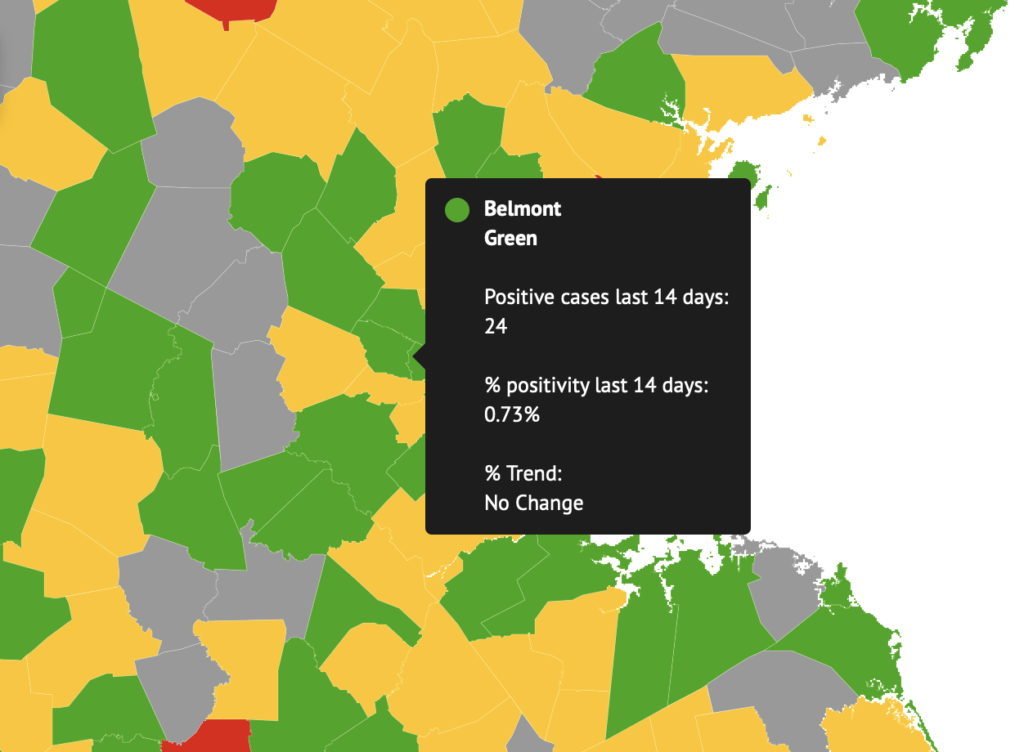Photo: Update on COVID-19 in Belmont
Belmont is closing in on a stark milestone of 1,000 COVID-19 cases, according to data from the state’s Department of Public Health.
As of Jan. 29, 914 confirmed COVID cases among Belmont residents have been reported, an increase of 64 cases since Jan. 22.
Due to the new case count over the past two weeks, Belmont remains in the state’s Yellow zone, according to the new color designation metrics in which there are 10 average cases for 100,000 residents or less than five percent positivity over two weeks. Currently, Belmont has a positivity rate of 3.01 percent.
In the school subset, a dozen people – including students and staff – were tested positive with the coronavirus over the past week. Those include nine at Belmont High School, five at Chenery Middle and four at the Wellington. The total positive cases associated with Belmont schools now reads 115.
After examining year end death certificates in the beginning of January , there have been a total of 74 COVID-19 related deaths in Belmont, confirmed by that data filed with the Town Clerk’s Office.
The Massachusetts Department of Public Health (MDPH) continues to provide weekly reports on Thursday of COVID-19 data by city or town as part of its Dashboard for COVID-19 Cases, Quarantine and Monitoring.



